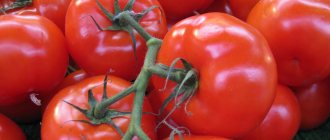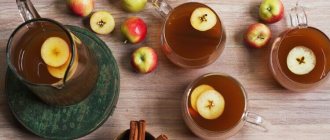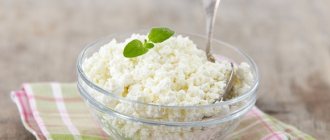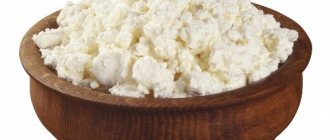Those who lead a healthy lifestyle and control their weight most often have to count calories. Currently, it is generally accepted to measure the energy value of food in calories. The higher the calorie content, the more this product contributes to the development of obesity. The calorie content of foods can be found in special tables. Including, there you can find information about how many calories are in cottage cheese. However, the calorie content of cottage cheese depends on many factors. In this article we will discuss the energy value of different varieties of this product.
This natural fermented milk product contains very few carbohydrates. But all varieties of cottage cheese are rich in easily digestible, complete milk protein. The beneficial properties of this product are used by nutritionists in therapeutic and preventive nutrition. It is known that low-fat varieties help normalize weight in obesity. Cottage cheese also helps reduce the level of total cholesterol in blood biochemistry and reduce the risk of developing atherosclerosis of large vessels.
Cottage cheese in other servings:
97
0.97
| Qty | A portion | Calories | In the counter |
| 100 g | 97 | ||
| 1 g | 0.97 | ||
| 219 | 1 cup = 226g | 219 | |
| 110 | 4 oz = 113g | 110 | |
| 27 | 1 ounce = 28.3g | 27 | |
| 17 | 1 tablespoon = 18g | 17 | |
| 6 | 1 teaspoon = 6g | 6 |
Benefits of cottage cheese for human health
If we briefly describe the benefits of cottage cheese, we get three important points:
- Cottage cheese contains vitamins A, B1, B2, C, E, PP and the basic amino acids methionine and tryptophan, which promote hematopoiesis and normalize the activity of the nervous system.
- It also contains beta-carotene, which normalizes metabolism in the body, as well as a large number of microelements necessary for the normal functioning of the human body (potassium, magnesium, iron, zinc, phosphorus, fluorine, selenium, etc.).
- Unlike components of other foods of animal origin, curd protein has neutral acidity and is easily digestible. It uses less gastric juice and enzymes to digest it, so it is suitable even for people with diseases of the gastrointestinal tract and is the basis of many diets.
Related Products
Cheddar Cheese (404 cal) Parmesan Cheese (420 cal) Cream Cheese (350 cal) Shredded Cheese (360 cal) Swiss Cheese (367 cal) Goat Cheese (360 cal) Shredded Cheese (420 cal) Cheese (318 cal) Gouda Cheese (356 cal) Hard Cheese (392 cal) Mozzarella Cheese (292 cal) Marble Cheese (404 cal) Feta Cheese (264 cal) Low Fat Cheese (195 cal) Blue cheese (353 cal) Brie cheese (334 cal) American cheese (371 cal) Processed cheese (364 cal) Brick cheese (371 cal) Camembert cheese (300 cal) Mexican cheese (365 cal) Cheese Product (229 cal) Cheese Spread (296 cal) Faux Cheese (295 cal) Ricotta Cheese (156 cal) Cheese Topping (370 cal) Cheese Substitute (248 cal) Queso Fresco (299 cal) Neuchâtel Cheese (253 cal) Provolone Cheese (351 cal)
Is it possible to eat cottage cheese while losing weight?
Cottage cheese is not only important for the body; when consumed, you quickly feel full. It allows you to eat a varied diet without gaining excess weight, normalizes digestion, and helps remove toxins from the body.
The product has a lipotropic effect (increases fat metabolism), regulates blood sugar and cholesterol levels. The high calcium content in cottage cheese not only strengthens bone tissue, but also, when interacting with essential amino acids, activates fat burning.
Despite the opinion that such food is indispensable for dietary nutrition, more and more information is emerging that low-fat cottage cheese (0.1 - 0.8%) does not bring benefits to the body. If there is a deficiency of fat in the functioning of the body, serious disturbances can occur. For weight loss while maintaining good nutrition, a product with a fat content of 1.8 to 5% is better.
It is also necessary to remember that during industrial production, trans fats, preservatives, stabilizers and other harmful components can be added to cottage cheese. For example, starch is often used to improve consistency.
You can check its presence by adding pharmaceutical iodine. If iodine spots turn blue, it means that this product contains starch, which increases its calorie content and slows down the process of weight normalization. Typically, starch is found in paste-like curds and products labeled as “curd product.”
To lose weight and stay healthy, it is better to buy regular low-fat cottage cheese and add fruits, berries and other ingredients to it yourself.
Composition of nutrients, BJU
Cottage cheese
| For quantity: 100 grams | ||
| Calories — 97 | Calories from fat - 37 | |
| BJU | ||
| Total fat content | 4.12g | |
| Saturated | 2.22g | |
| Polyunsaturated | 0.13g | |
| Monounsaturated | 1g | |
| Cholesterol | 15mg | |
| Total carbohydrate content | 3.66g | |
| Dietary fiber | 0.1g | |
| Sugar | 1.81g | |
| Squirrels | 10.9g | |
| Vitamins and microelements | ||
| A - 42.67 µg | C - 1.8 mg | |
| B-6 – 0.05 mg | B-12 - 0.48mcg | |
| D - 0.03 µg | E - 0.06 mg | |
| Calcium 64 µg | Iron 0.11 mg | |
| Magnesium 6.33 mg | Zinc 0.34 mg | |
| Potassium 93 mg | Sodium 370 mg | |
Distribution of calories for BJU:Carbohydrates (18%) Fats (38%) Proteins (44%) | ||
What factors influence the calorie content of cottage cheese?
Cottage cheese is a fermented milk product obtained by fermenting milk and removing the whey. It is customary to classify cottage cheese prepared using traditional technology into low-fat (up to 1.8% fat content), classic (4-18%) and full-fat (19-23%). Each percentage of fat greatly increases the energy value of the product. After all, one gram of fat contains 9 kilocalories.
The calorie content of low-fat cottage cheese, accordingly, will be the lowest of the entire line of these products. The calorie content of cottage cheese with 5% fat content is lower than the calorie content of cottage cheese with 9% fat content. The fattest varieties contain about 23% fat and maximum calories. In some cases, during production, starch or other carbohydrates are added to a natural fermented milk product, which also affects its calorie content.
Sugar especially increases the energy value. Sweet curds will clearly not be considered a dietary product. If butter, dried fruits, and sugar are added to cottage cheese, the result is a special curd product that should not be consumed by those who are trying to lose weight. Such products are called curd mass or cheese curds.
The calorie content of homemade cottage cheese, made independently from village milk, depends on many factors. The breed and age of the cow, the time of year and the feed used - all this affects the calorie content of the cottage cheese. To make homemade cottage cheese less fatty, it should be made from skim milk, that is, by first removing the cream.
Fasting day
The main food product for such a diet is low-fat cottage cheese. It is recommended to eat it throughout the day, but not more than 500 g, avoiding other sources of protein. The following ingredients can and should be added to cottage cheese:
- bran;
- pureed apple;
- zucchini and other unsweetened vegetables;
- honey;
- greens and garlic.
During the curd fasting day, you need to eat food often and in small portions. As a result of such a diet, it is possible to lose 2-3 kg.
What to cook
If you compare the taste of 0% cottage cheese with fatter options, then, unfortunately, it loses. This is quite natural; fatty foods always seem tasty to us.
However, in recipes, any cottage cheese is often replaced with low-fat cottage cheese without compromising the final result. In addition, it is supplemented with a large number of different products, the main thing is not to negate the dietary effect by consuming sweet or fatty additives.
Products that go well with cottage cheese and are not too high in calories:
- green apples;
- greens and garlic;
- bell pepper;
- carrot;
- zucchini;
- celery.
The classic combination is cottage cheese, honey and fruit. It is important to remember that the latter are a source of fructose; they have a different glycemic index. So cottage cheese with banana and honey is a wonderful, tasty dessert, but it’s unlikely to help you lose weight.
Low-fat cottage cheese pancakes
This dish is perfect for breakfast.
Ingredients for three servings:
- low-fat cottage cheese - 500 g;
- carrots - 100 g;
- celery root - 50 g;
- garlic - 1 clove;
- egg - 1 pc.;
- whole grain flour - 2 tbsp. l. + 2 tbsp. l. for deboning;
- soda - ½ tsp;
- salt - to taste.
Cooking technology:
- Mix cottage cheese, finely grated carrots, celery and garlic (add herbs to taste).
- Mix well, break the egg into it and stir again.
- Then put two tablespoons of flour and sprinkle soda on top. First mix the flour with soda, and then mix everything with the curd mass.
- Form into balls, flatten them slightly and roll in flour.
- Fry over low heat with a lid. This is how cheesecakes for those losing weight turn out fluffy.
You can fry without oil in a non-stick frying pan.
Calorie content 150 kcal. per 100 g.
Casserole with dark chocolate
Ingredients needed for three servings:
- low-fat cottage cheese - 500 g;
- low-fat kefir - ½ cup;
- egg - 1 pc.;
- semolina - 2 tbsp. l.;
- dried cranberries - 100 g;
- dark chocolate - 1/3 bar;
- vegetable oil;
- honey and warm water - 3 tbsp. l.
How to cook:
- Using a blender, mix cottage cheese, egg and kefir.
- Pour semolina into the resulting mass and mix well again.
- Finely chop the chocolate and add it along with the cranberries to the curd dough.
- Place the mixture in a baking dish and place in the oven.
- Bake for 40 minutes at 180 degrees.
- After this, the casserole needs to be removed from the oven and poured with honey, previously mixed with warm (not hot) water. Let it soak.
Calorie content 168 kcal. per 100 g. If you replace cranberries with raisins, they will increase slightly.
Recommendations for choosing, storing and consuming cottage cheese
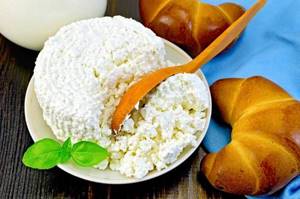
A fresh product should have a soft, crumbly, slightly spreading structure. A small amount of whey is acceptable. The smell and taste should be like any other milk. Color – creamy white.
When purchasing, pay attention to the main signs that indicate damage or disruption of the production process:
- Rotten taste and aroma are the result of the activity of putrefactive bacteria, which spread when using poor sourdough, violating storage conditions or production standards;
- A very sour taste is the result of long pressing, antibiotics or detergents getting into the milk;
- Rancidity is the presence of foreign microorganisms and mold. This usually occurs when milk is pasteurized at a low temperature during the production of high-fat curds;
- Acetic taste and aroma - occurs when the product is stored at elevated temperatures and during the activity of acetic acid bacteria;
- Bitterness – wormwood got into the cow’s diet along with the hay. This may also be a consequence of excess pepsin content or the presence of putrefactive bacteria;
- Yeast taste, swelling of the package - the action of E. coli or insufficient cooling of the product during storage;
- Excess whey is the result of poor pressing;
- The appearance of mucus and mold is associated with damp storage or poor-quality packaging;
- Flatness - the use of poor, low-active leaven.

It is impossible to keep cottage cheese for a long time even at a slightly subzero temperature of 0 to -2 degrees. When frozen and maintained at a constant temperature of -18 degrees, curd products can be stored for six months. Storage in the refrigerator is allowed for 2.5 days at 2-6 degrees. Products with stabilizers and reduced fat content can last for a week.
If the quality of the curd has deteriorated, it can be “reanimated” by mixing it with cream. Soaking in milk for a couple of hours and then squeezing will also help.

You can prepare various dishes from cottage cheese, eat it in pure form or in combination with milk, honey, salt, sugar, sesame or flaxseeds, and sour cream. Cheesecakes, beloved by many, are not only very appetizing, but also healthy, because calcium is not destroyed during heat treatment.
Without a doubt, cottage cheese is a unique valuable product that provides our body with all the necessary substances. The main thing is not to abuse it, like any other food, then you can recharge with a surge of energy and feel cheerful.
Is it suitable for everyone?
Like any product, low-fat cottage cheese has restrictions on its use:
- It should not be included in the diet if you have stomach diseases, especially those associated with high acidity; for ulcers, pancreatitis and gastritis, with a tendency to constipation.
- Liver and kidney diseases also dictate the need to treat cottage cheese with caution; a large amount of protein in these cases is harmful.
- Individual intolerance to dairy products, associated or not associated with lactase deficiency, is also possible.
- Among the pathologies for which doctors recommend reducing cottage cheese consumption is atherosclerosis.
- During pregnancy and baby food, you should not choose low-fat fermented milk products; in these cases, it is important to receive all the substances in full.
If you have doubts and the body reacts to cottage cheese in a non-standard way, consult a gastroenterologist. You don’t need to follow a diet at all costs; consider your personal preferences and body characteristics.

Unique properties
First of all, we need to clarify the term “low-fat.” According to production technology, it is impossible to completely remove fat from dairy products. Its maximum permissible value in a low-fat product reaches 1.8%. If in a store you come across milk, kefir or cottage cheese with a fat content below this indicator, then you can safely classify them as dietary, and the 0% label is more of a symbol indicating the type of product than an indication of the actual fat content.
As is known, the beneficial properties of cottage cheese in some cases are superior to those of other dairy products. It can be consumed even if you are lactose intolerant. This is due to the presence of lactic acid bacteria, beneficial microflora and the absence of sugar, which leaves the cottage cheese along with the whey.
Fermented milk products can support many processes in a healthy body:
- strengthen the immune system;
- eliminate the effects of stress;
- help the cardiovascular system and joints;
- improve the condition of skin, hair and nails;
- maintain good vision.
Calorie content and composition
The calorie content, which directly depends on the fat content, in such products is much lower, as already mentioned, up to 101 kcal. per 100 g.
The amount of carbohydrates is quite insignificant - 1.3 g per 100 g. If we talk about other useful elements, then there are many of them:
- protein - 18 g per 100 g;
- sulfur - 220 mg. per 100 g;
- calcium - 120 mg;
- phosphorus - 189 mg;
- potassium - 117 mg;
- chlorine - 115 mg;
- magnesium - 24 mg;
- sodium - 44 mg;
- as well as iron, selenium, copper, zinc and fluorine.
Cottage cheese is rich in vitamin C, it contains about 0.5 mg. per 100 g.
A complete set of B vitamins is one of the significant advantages of this product: thiamine (B1), riboflavin (B2), pantothenic (B5), nicotinic (B3) and folic (B9) acids are also contained in it, albeit in smaller quantities.

What is the specificity of 0% fat content?
Features of a low-fat product must be taken into account and used correctly:
- You need to understand that such an important substance as calcium is absorbed only in combination with animal fat. Accordingly, low-fat cottage cheese will not be able to enrich the body with calcium without special additives. The absorption of the substance is reduced by 40%.
- But protein, on the contrary, is contained and absorbed in even greater quantities - 18% versus 14.
- The situation with vitamins is approximately the same as with calcium. Low-fat foods contain significantly less fat-soluble vitamins such as A, D, E. Therefore, they must be obtained from other sources.
Cottage cheese is digested relatively quickly, 2-3 hours during the day. At night this process slows down to 5 hours.
Low-fat cottage cheese: pros and cons
Dishes with “zero” cottage cheese are the main companions of everyone who makes a firm decision to lose weight. Low-fat cottage cheese with reduced calorie content for breakfast can provide quick relief from extra pounds, but can lead to decreased performance, lethargy and apathy. If you use “zero” cottage cheese as a main dish, then you need to mix it with honey, berries or fruits. This way you can feel full and recharge your energy faster. At the same time, a full meal will speed up metabolism, which is very important when losing weight.
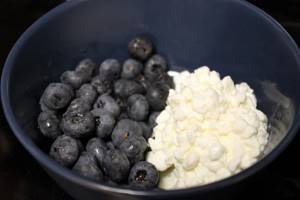
In addition, you should definitely include some meat or fish in your daily diet to compensate for the body's need for fat. This will give you strength and help with concentration. When purchasing your favorite fermented milk product, you need to pay attention not only to how many calories are in the cottage cheese, but also to the presence of additives in it. Various E (preservatives, antioxidants, stabilizers), flavorings and sweeteners make cottage cheese taste more pleasant, but significantly increase its calorie content and harm the body. It will be much healthier to mix low-fat cottage cheese with berries, fruits, honey or jam.
For many people losing weight, the question remains: “Is low-fat cottage cheese a nighttime snack?” The opinions of nutritionists on this matter are diametrically opposed. Some claim that casein protein will help block hunger throughout the night, while others advise using cottage cheese for breakfast or an afternoon snack, and in the evening satisfying hunger with an apple or kefir. The final decision whether to consume “zero” cottage cheese in the evening is made by dieters independently, in accordance with the results of weight loss and their well-being. A careful study of the composition of the product, its calorie content and production time will help you competently create your daily menu, as well as enjoy a tasty and incredibly healthy product!
Some tips on how to treat cracked nipples
Discussion: 2 comments
- Svetlana:
01/10/2016 at 01:14Cottage cheese is a supplier of calcium to the body. Regardless of its type, cottage cheese does not change its content. With the help of the cottage cheese diet, you can get rid of extra pounds. It is useful for both children and adults.
- Alina:
01/24/2016 at 01:20
Cottage cheese is a wonderful product. I love it. If you want to lose weight, then you need to treat cottage cheese with caution. It is even possible to exclude it, but only your personal nutritionist can say this. In general, half-fat cottage cheese will not do any harm, but only benefit.
Benefit
Low-fat cottage cheese is a valuable source of easily digestible protein, which is involved in all vital processes of the body. Due to this, healing occurs. The product is often prescribed as an auxiliary nutritional supplement in the treatment of a number of diseases:
- hypertension;
- ischemic and other cardiac disorders;
- Gastrointestinal pathologies: colitis, enteritis, ulcers;
- obesity;
- damage to the liver and gallbladder;
- diabetes;
- atherosclerosis.
This is due to its wide range of beneficial properties:
- restores metabolism and lipid balance;
- normalizes the functioning of the nervous system and stimulates brain activity;
- increases the level of hemoglobin in the blood;
- strengthens bones, improves the condition of nails and hair;
- maintains muscle tone and promotes its rapid recovery after physical activity;
- is a calcium supplier for people who are contraindicated in fat-containing foods;
- serves as a prevention of oncology;
- improves intestinal motility and improves digestion;
- has a beneficial effect on the thyroid gland.
For adherents of a healthy lifestyle and older people, cottage cheese is recommended to be taken daily in the morning and evening (1-2 hours before bedtime). For diabetes, the allowed daily intake is 150–200 g, which will be a useful addition to the vegetable diet as a source of easily digestible proteins and carbohydrates.
For athletes
Low-fat fermented milk product is ideal for athletes and bodybuilders. The reason is that such a protein supplement fully nourishes the muscles, promotes their growth and helps to quickly recover after increased strength loads. And to build muscle mass, you need a lot of protein, which is plenty in low-fat cottage cheese.
This category of people needs to eat up to 500 g of dietary fermented milk product with sour cream dressing per day. Divide this volume into 5-6 servings and consume shortly before training.
For weight loss
The benefits of low-fat cottage cheese in terms of weight loss are due to several factors - low calorie content, low carbohydrate content, acceleration of metabolism, cleansing the body of toxins. Of the majority of low-calorie foods, it is most often included in various diets and used for unloading. In this way, it is possible not only to adjust weight, but also to improve the digestive system. Several options for fasting days:
- Curd and kefir. Eat cottage cheese (100 g) 5-6 times a day, washed down with kefir (150 ml).
- Fermented milk products . This means 4 meals a day with the total amount of food consumed: sour cream - 50 g, low-fat cottage cheese - 600 g, milk - 100 ml. Additionally, drink a decoction of rose hips - about 3 glasses in total.
- Curd and yoghurt . You will need 200 g of cottage cheese and 600 ml of yogurt per day, divided into 4-5 doses. They also drink: green tea, herbal infusions and clean water.
In this way, you can lose from 1.5 to 2 kg of excess weight in 3 days.
To reduce body weight and prevent obesity, it is recommended to eat 300–350 g of light cottage cheese daily.
This product is one of the few that can be eaten even late in the evening if there is a strong feeling of hunger. But you shouldn’t overeat, as a full stomach will not allow the body to fully rest during sleep. The permissible evening portion is no more than 100 g.
For pregnant women
For pregnant women, cottage cheese is important in their daily diet as a source of calcium. This microelement is necessary for the full formation of a child’s bone tissue. Fatty is also suitable, but low-fat is easier to digest. It is enough to eat 250–300 g per day.
Uncontrolled eating can cause kidney problems, which is due to the high protein content in the composition.
During lactation, the daily intake of cottage cheese should not exceed 100–150 g. This is enough to saturate the body with protein and calcium, enhance the production of breast milk and improve its quality.
For children
Children under three years of age should not be given any low-fat foods, as a balanced diet is required for full development and growth. During this time, it is recommended to feed babies with special curds enriched with essential vitamins and microcomponents.
After reaching 3 years of age, cottage cheese with 0.1% fat content is introduced into the diet gradually and in small portions - 60–70 g per day.
Types of cottage cheese
Cottage cheese can be classified depending on its fat content, namely:
- fatty – contains 18% fat content
- bold – 9% (it is worth noting that this type also includes the dietary type)
- low-fat – no more than 3% fat
This product can also be divided into:
- acidic, which is produced from a low-fat dairy product, and protein coagulation occurs as a result of acid fermentation and added starter cultures
- acid-rennet cottage cheese has a difference in production, since during its production, in addition to the starter, rennet enzymes or, as it is also called pepsin, are added to the milk.
Cottage cheese is consumed in any form - salty, sweet, with honey and milk - this does not change its energy value. It is stored for 36-48 hours at a temperature range from 0 to 8*C. It is worth remembering that during its storage, air access should be minimized.
Beneficial features
Thanks to a record amount of protein, calcium, phosphorus, potassium and sodium, the product has unique properties for the body of men, women, children and the elderly. The following are considered the most valuable:
- normalizes digestion, reduces the amount of gases in the small and large intestines;
- suppresses heartburn and prevents its occurrence;
- acts as a building material for muscles and helps them recover after heavy loads;
- strengthens bones and prevents the development of osteoporosis, arthritis, arthrosis, prevents fractures;
- improves heart functioning;
- normalizes the activity of the central nervous system, memory and concentration;
- helps improve and maintain visual function, prevents myopia;
- helps normalize metabolic processes and is used in dietary nutrition for weight loss;
- prevents stress and depression;
- has a beneficial effect on the pancreas, liver and gallbladder;
- prevents the formation of kidney stones due to its mild diuretic effect;
- normalizes uric acid levels in the body;
- acts as a prophylactic agent for thyroid pathologies;
- strengthens vascular walls, lowers blood pressure.
The product is very valuable for elderly people who suffer from various pathologies of the heart, liver, kidneys, and musculoskeletal system. It helps maintain stable blood glucose levels in diabetics. Cottage cheese is especially necessary for patients with osteoporosis, arthrosis and gout, since it significantly alleviates the course of these ailments and prevents complications. Hypertensive patients also need to include a natural and high-quality product in their daily diet.
For men who are involved in bodybuilding, cottage cheese is also necessary. It helps muscles grow intensively and increases the athlete’s strength, endurance, and tones the body.
For women, the product is indispensable because it strengthens hair and nails, improves the condition of the skin, and reduces the symptoms of menopause. During pregnancy and breastfeeding, it is recommended to consume cottage cheese daily in moderate quantities to provide the body with essential minerals and vitamins.
For children, the product is included in the diet for the purpose of normal development of the musculoskeletal system, teeth, increasing strength and endurance, and improving mental activity.
Low-fat cottage cheese is suitable for people losing weight. It quickly fills you up and prevents overeating, which has a positive effect on a person’s weight. The high calcium content helps speed up metabolism and promotes more intense weight loss.
Is a low-fat product healthy?
People who stick to a diet often wonder if low-fat cottage cheese is healthy. The answer is definitely positive, since such a product has all the valuable properties of a regular one, but at the same time it contains a minimum amount of calories. This makes it the best option for those losing weight and patients with digestive problems.
When choosing such cottage cheese, you should pay attention to the production date and expiration date. Natural cannot be stored for more than a week; if this indicator is longer, the contents of the package contain chemical additives. You should not choose such a product, as it will not bring benefits.
How to make at home
There is nothing particularly difficult in preparing a homemade product yourself; such cottage cheese is no worse than store-bought. You just need to skim it: take good quality milk and put it in the refrigerator for 3-4 hours, the thick light cream will rise to the top and can be removed.
There are several more ways to curdle milk:
- Using calcium chloride. Special ampoules are sold at the pharmacy. The milk needs to be heated and calcium added to it; curdling will happen instantly. To remove excess sugar, you need to throw the mass onto a sieve or cheesecloth and let the whey drain, but you can eat this kind of cottage cheese without folding it.
- Option for freezing sour milk. The expired drink is placed in the freezer, allowed to freeze completely, and then the resulting ice is thrown onto cheesecloth. In this case, the cottage cheese turns out to be more creamy in consistency, whey-like and reminiscent of cottage cheese.
- Natural fermentation. Milk in a clean container is simply placed in a warm place, waiting until it sours and a curd begins to form. Then, it is heated and, in turn, is also tilted to remove the liquid.
- You can use not only milk as a base, but also fermented milk products such as kefir or fermented baked milk. They need to be heated in a water bath and separation into cottage cheese and whey will occur. It is important not to overdo it: as soon as flakes form, the heating stops and the mass remains to cool in the same container. Then you can discard the curd, but when it cools completely, the curd lump turns out to be quite dense, it is easy to remove it from the whey without any extra effort.
Low-fat cottage cheese is delicious to eat without heat treatment, arrange fasting days on it and use it as a basis for a diet.
For children and adults with intolerance to cow's milk, goat's milk is recommended, from which cottage cheese can be prepared in similar ways. Do not forget that it is impossible to make anything fermented from drinks with a long shelf life.
Is cottage cheese harmful?
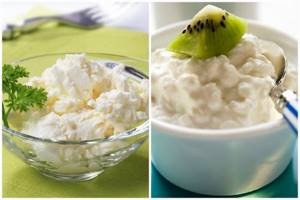
This product may be harmful to the human body in the following cases:
- In case of individual intolerance, which is extremely rare;
- With an excess of protein. You need to eat no more than 200 g of cottage cheese per day. Overeating can be especially harmful for people with severe kidney disease or atherosclerosis;
- Under incorrect storage conditions, the product quickly deteriorates and pathogenic microorganisms develop in it, so you should always look at the expiration date, consistency and smell.


